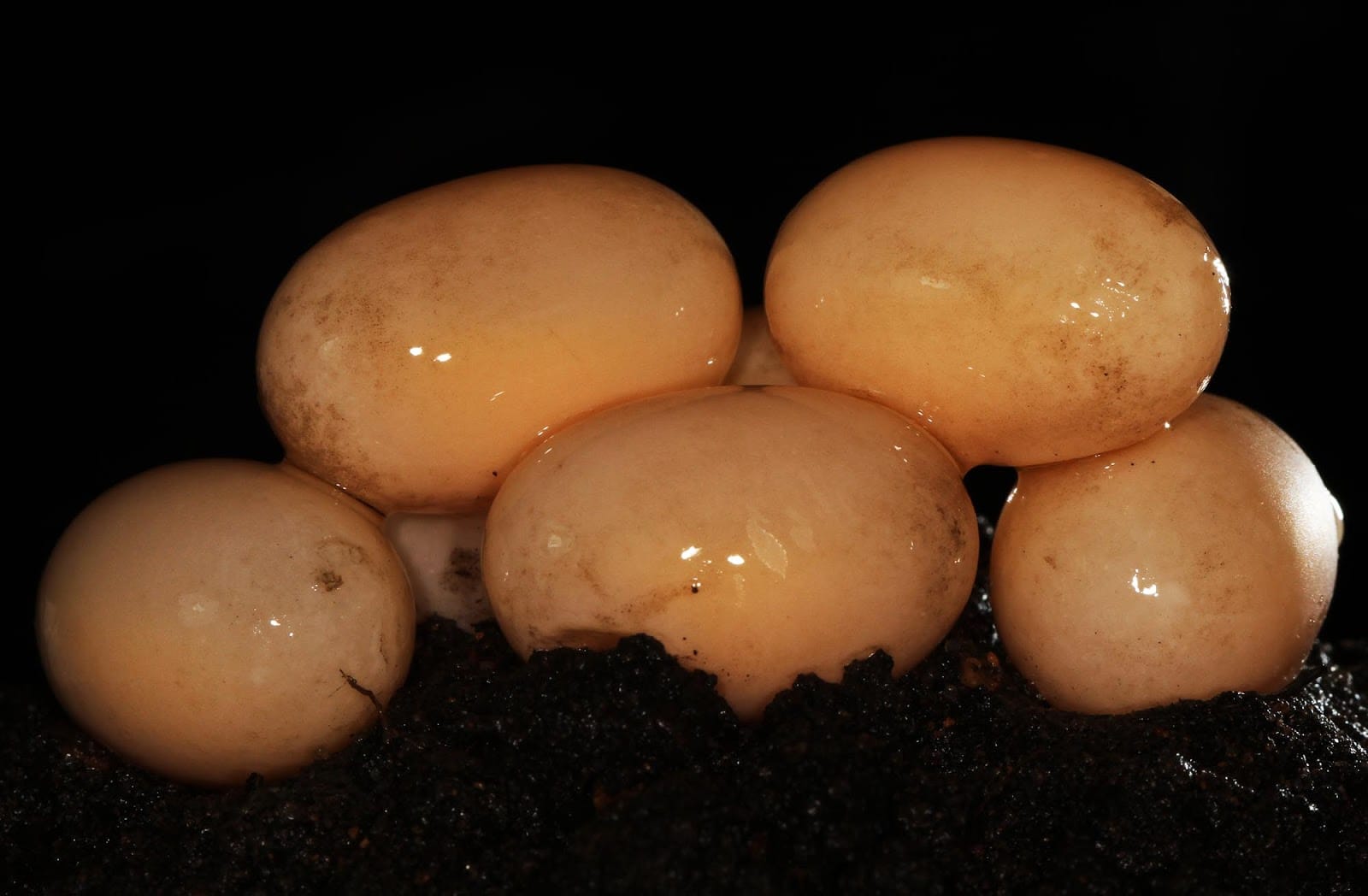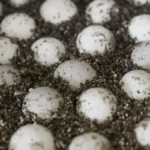Hey there, nature enthusiasts! You know those beautiful painted turtles we all love? Well, their eggs are like tiny time capsules that can tell us so much about their future. Understanding how these eggs develop and hatch can be the key to protecting these amazing creatures. So, let’s dive into the fascinating world of painted turtle egg incubation and learn how we can help them thrive for generations to come.
Painted Turtle Eggs: Unlocking the Secrets of Their Incubation
Hey there, turtle enthusiasts! If you’re curious about the fascinating journey of painted turtle eggs, buckle up because we’re about to dive into the incredible!
Hatching Time: A Delicate Balancing Act
Painted turtle eggs aren’t in a hurry to hatch. They take their sweet time, usually between 60 and 90 days. But there’s a secret ingredient that can speed up or slow down the process: temperature. Just like us humans, these eggs prefer cozy temperatures between 68 and 77 degrees Fahrenheit.
Seasonal Rhythm: In Sync with Nature’s Beat
Painted turtles like to plan their egg-laying adventures around the summer and early fall. But some clever subspecies have a special trick up their shells. They stash their eggs in the nest for the winter and wait until the warm weather returns for their little turtles to hatch. This clever strategy helps them avoid the harsh cold and ensures they have plenty of food and sunshine when they emerge.
Nesting Sites: The Perfect Hideaway
The place where a painted turtle egg calls home matters a lot. Nests give the eggs the right conditions they need to hatch successfully. And guess what? The temperature of the nest even decides whether the baby turtles will be boys or girls! Warmer nests produce more female turtles, while cooler nests favor males. Isn’t that amazing?
Conservation Countdown: Every Egg is a Treasure
These painted turtle eggs aren’t just adorable; they’re also crucial for the future of the species. By understanding how long they take to hatch and what ideal conditions they need, we can create safe nesting sites and protect these tiny turtles. After all, every egg that hatches brings a new chance to keep these magnificent creatures around.
In the end, understanding the incubation time of painted turtle eggs is like unlocking a secret code for their survival. It empowers us to help these beautiful turtles thrive and continue their amazing journey in the wild. So, let’s keep an eye on these precious eggs and ensure they have the best chance to孵化 and grow.
Remember that did you know Painted turtles are unique because of their beautiful colorful shells, but do you know how many eggs they lay? Click here to find out how many eggs do painted turtles lay. And do you know they can hold their breath underwater for a very long time. How long do you think? Explore how long can painted turtles hold their breath to find out.
How Long Does It Take for Painted Turtle Eggs to Hatch?
Have you ever wondered how long it takes painted turtle eggs to hatch? Let’s dive into the fascinating world of these shelled wonders.
Painted turtles are remarkable creatures that add charm to our aquatic environments. Understanding their egg incubation period is key to protecting their survival. Here’s everything you need to know about the time it takes for these eggs to crack open:
Incubation Period: A Turtle’s Patiently Wait
Imagine a turtle’s nest tucked away in a quiet corner, filled with precious eggs. These round, soft eggs typically take 67 to 75 days to hatch. The process starts when the mother turtle carefully digs a hole and buries them. By August or September, these eggs transform into tiny turtles, pushing their way into the world.
Eggs in the Balance: Factors that Matter
Like a delicate ecosystem, the incubation journey is influenced by several environmental factors:
- Temperature: Warm temperatures speed up the eggs’ development, while cooler temperatures slow it down. Imagine a cozy incubator where eggs thrive.
- Humidity: Moisture is crucial for the eggs. Without it, they could dry out and slow down their growth. Think of a humid terrarium where the eggs stay hydrated.
- Nest Site: The spot where the eggs are buried makes a difference. A shady, well-drained nest provides the right temperature and humidity balance for egg development.
Temperature’s Role in Turtle Gender
Here’s a cool fact: the temperature inside the nest affects the sex of painted turtle hatchlings. Higher temperatures favor female turtles, while lower temperatures result in more male turtles. This temperature-dependent sex determination ensures a balance between genders in the turtle population.
Key Pointers:
- Incubation Duration: Under natural conditions, painted turtle eggs incubate for 67 to 75 days.
- Environmental Influences: Temperature, humidity, and nest site characteristics play significant roles in egg development.
- Temperature and Gender: Incubation temperature can determine the sex of hatchlings, with higher temperatures favoring females and lower temperatures favoring males.
Conclusion: Preserving the Turtle Legacy
Protecting painted turtles and their hatchlings is our collective responsibility. By providing suitable nesting sites, ensuring optimal incubation conditions, and safeguarding their habitats, we can ensure the survival of these intriguing creatures. As guardians of our natural world, let’s ensure that future generations can witness the wonder of painted turtle eggs hatching and the vibrant ecosystems they grace.
What is the Ideal Incubation Temperature for Painted Turtle Eggs?
Hey there, fellow animal lovers! Let’s dive into a little turtle talk, shall we? Today, we’re cracking the code on the best way to hatch those precious painted turtle eggs.
The Magic Number:
So, what’s the ideal incubation temperature? Well, aim for a cozy range of 75 to 85 degrees Fahrenheit (that’s around 23 to 29 degrees Celsius). This golden spot allows the little turtles to grow and develop healthily inside their shells.
The Waiting Game:
Patience is key here. Typically, it takes about 70 to 80 days for those eggs to transform into tiny turtles. But remember, it’s all about that temperature. Warmer conditions can speed things up, while cooler ones might make the turtles a little late to the party.
The Temperature Dance:
The temperature plays a crucial role. Too hot, and the eggs might cook before they’re ready. Too cold, and the turtles might not have enough time to fully develop. So, the key is to find that perfect balance.
A Special Note:
Just a heads-up, don’t let those eggs get too toasty. Anything over 85 degrees Fahrenheit might harm the little turtles within.
Now, go forth and hatch those turtles!
What is the typical clutch size for painted turtle eggs?
Painted turtles are well-known for their signature markings and impressive reproductive capabilities. When it comes to laying eggs, these turtles showcase a fascinating pattern. A typical clutch of painted turtle eggs ranges from 5 to 8 eggs. However, it’s not uncommon for larger females to produce more eggs. The exact number can vary, with some females laying up to 23 eggs throughout their nesting season.
The eggs themselves are a sight to behold. They’re typically white in color with a slightly oval shape and a unique leathery shell. Each egg measures approximately 1 inch in length and 0.75 inches in width.
Key Features of Painted Turtle Egg Clutches:
- Clutch size ranges from 5 to 8 eggs for most females.
- Larger females tend to lay more eggs.
- Eggs are typically white and slightly oval in shape.
- They have a leathery shell and measure around 1 inch long and 0.75 inches wide.
- Female painted turtles can lay multiple clutches during a nesting season, with a maximum of 5 clutches and up to 23 eggs in total.
Additional Notes:
Painted turtles usually lay their eggs in sandy or gravel areas near water bodies like ponds or lakes. The female digs a shallow nest and buries the eggs within it. After laying her eggs, the female leaves the nest and does not provide any parental care. The eggs incubate for a period of about 60 to 90 days before the baby turtles emerge.
Conclusion:
Painted turtles exhibit a unique reproductive strategy, laying clutches of eggs that vary in size depending on the female’s age and size. These eggs are a crucial part of the turtle’s life cycle, ensuring the continuation of this fascinating species.
FAQ
Q1: How long does it typically take for painted turtle eggs to hatch?
A1: Painted turtle eggs typically take between 60 and 90 days to hatch, with warmer temperatures leading to faster hatching rates.
Q2: What is the ideal incubation temperature for painted turtle eggs?
A2: The ideal incubation temperature for painted turtle eggs is between 20-25 degrees Celsius (68-77 degrees Fahrenheit).
Q3: What factors can influence the painted turtle egg incubation period?
A3: Factors that can influence the painted turtle egg incubation period include temperature, humidity, and the external environment.
Q4: At what time of year do painted turtle eggs hatch?
A4: Painted turtle eggs typically hatch in late summer to early fall, with some subspecies overwintering in the nest and hatching the following spring.
Q5: How can we ensure the successful incubation of painted turtle eggs?
A5: Ensuring the successful incubation of painted turtle eggs involves maintaining optimal temperature and humidity levels, providing adequate moisture, and protecting the eggs from predators and disturbances.
- Unveiling the Enigma: Mansoureh Khojasteh Bagherzadeh’s Public Appearances & Private Life in Iran - July 18, 2025
- Unveiling the Mystery: Mansoureh Khojasteh Bagherzadeh’s Husband: A Rare Glimpse into a Private Life - July 18, 2025
- Unveiling Masoud Khamenei’s Mother: Power, Influence, and Iran’s Future - July 18, 2025

















Comments are closed.